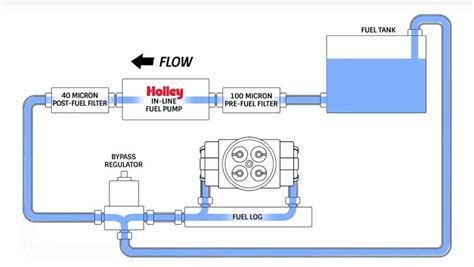Fuel Regulator: Your Guide to Proper Adjustment
Maintaining the correct fuel pressure is critical for optimal engine performance, fuel efficiency, and longevity. The fuel regulator plays a pivotal role in this process, precisely controlling the amount of fuel delivered to the engine. This guide will explore the function of a fuel regulator, common issues, and how to properly adjust it, providing you with the knowledge to keep your vehicle running smoothly. Understanding this vital component can save you money on repairs and ensure your engine's health.
What is a Fuel Regulator?
A fuel regulator is a pressure-reducing valve situated within the fuel system. Its primary function is to maintain a consistent fuel pressure, regardless of engine speed or demand. It receives fuel from the fuel pump at a high pressure and reduces it to the precise level required by the fuel injectors. This ensures the correct air-fuel mixture enters the combustion chamber, leading to efficient combustion and optimal engine performance. Different types of fuel regulators exist, including mechanical, electronic, and return-less systems. The type of regulator used depends on the vehicle's fuel injection system design.
Common Fuel Regulator Problems: Signs of Trouble
A malfunctioning fuel regulator can manifest in several ways, drastically impacting your vehicle's performance and potentially causing damage. Knowing the signs can help you address the issue promptly.
Rough Idling or Stalling: This often indicates inconsistent fuel delivery, a hallmark of a faulty regulator.
Poor Fuel Economy: An inaccurate fuel pressure leads to inefficient combustion, resulting in reduced fuel efficiency. This symptom is subtle and may be harder to pinpoint.
Hesitation or Lack of Power: Insufficient fuel pressure can cause the engine to hesitate or struggle to accelerate.
Black Smoke from the Exhaust: Excessive fuel, due to a malfunctioning regulator, often results in black smoke from the exhaust.
Fuel Leak: In some cases, a failing fuel regulator can lead to a fuel leak, posing a significant safety hazard. This requires immediate attention.
How to Adjust a Fuel Regulator (Important Considerations)
Disclaimer: Adjusting a fuel regulator is a complex task that requires mechanical aptitude and specialized tools. Incorrect adjustment can severely damage your engine. If you are not comfortable performing this task, it's crucial to seek professional help from a qualified mechanic. This information is for educational purposes only and should not be interpreted as a guide for DIY repair unless you possess the necessary expertise.
What type of fuel regulator do I have?
Identifying the type of fuel regulator in your vehicle is the first step. This determines the approach to any potential adjustment. This often requires consulting your vehicle's repair manual or a qualified mechanic. Mechanical regulators are adjusted via a screw, while electronic ones require diagnostic tools. Return-less systems typically don't have an adjustment mechanism.
How do I test my fuel pressure?
Testing fuel pressure is crucial before any adjustment attempt. This involves using a fuel pressure gauge connected to the fuel system, usually requiring specialized tools and knowledge. The reading should be compared to the manufacturer's specifications for your specific vehicle.
What are the adjustment procedures for different fuel regulator types?
Adjustment procedures vary drastically depending on the type of fuel regulator. Mechanical regulators may involve adjusting a screw to alter the pressure, while electronic regulators usually require specialized diagnostic equipment. Return-less systems, however, are generally not adjustable by the end-user. Improper adjustment can cause serious engine damage, so seeking professional assistance is vital.
How often should I check my fuel regulator?
The frequency of checking your fuel regulator depends on several factors, including your vehicle's age, mileage, and driving habits. While not a routine maintenance task, it's recommended to have your fuel system pressure checked as part of routine servicing or if you suspect a problem.
Can I replace a fuel regulator myself?
Replacing a fuel regulator is a more involved process than adjustment. It requires careful handling of fuel lines and proper disposal of the old component. Again, this is a task best left to professionals unless you have significant automotive experience and safety precautions in place.
This guide provides a general overview of fuel regulators and their adjustment. Always consult your vehicle's service manual or a qualified mechanic for specific instructions and safety procedures. Proper fuel pressure maintenance is crucial for reliable vehicle operation and prevents costly repairs down the line.

